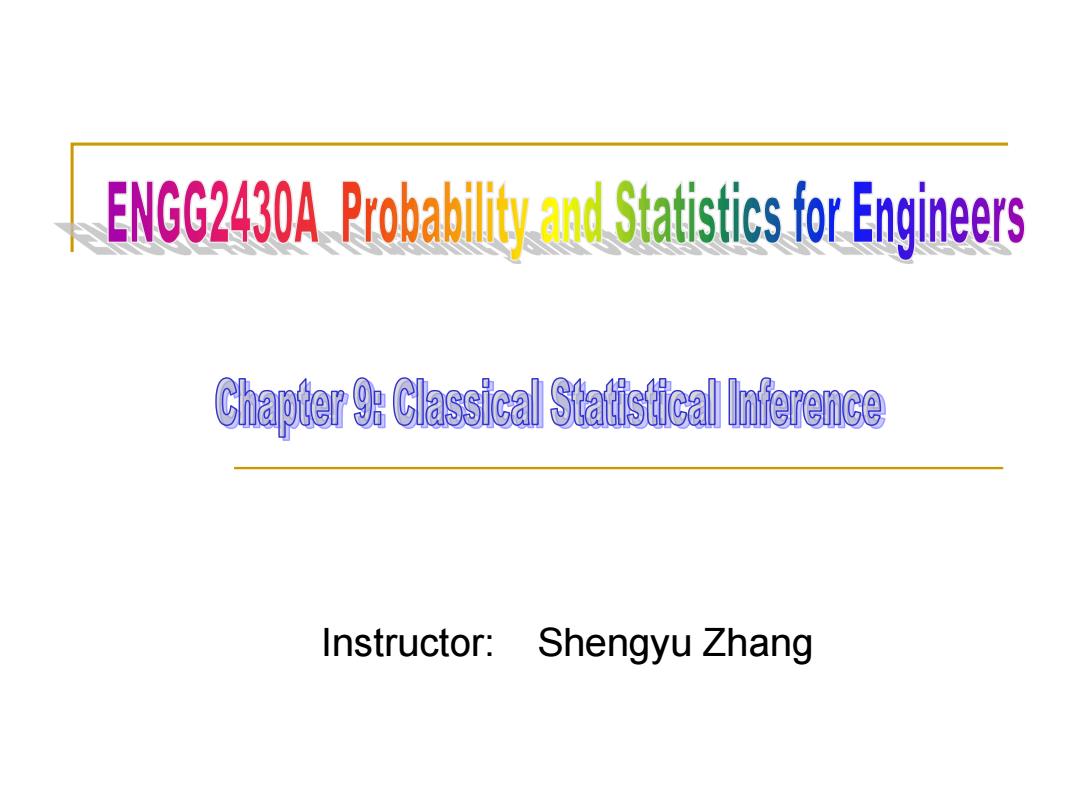
ENGG40Proatatisticsfoer Chapter 9:Classical Statistical Inference Instructor:Shengyu Zhang
Instructor: Shengyu Zhang
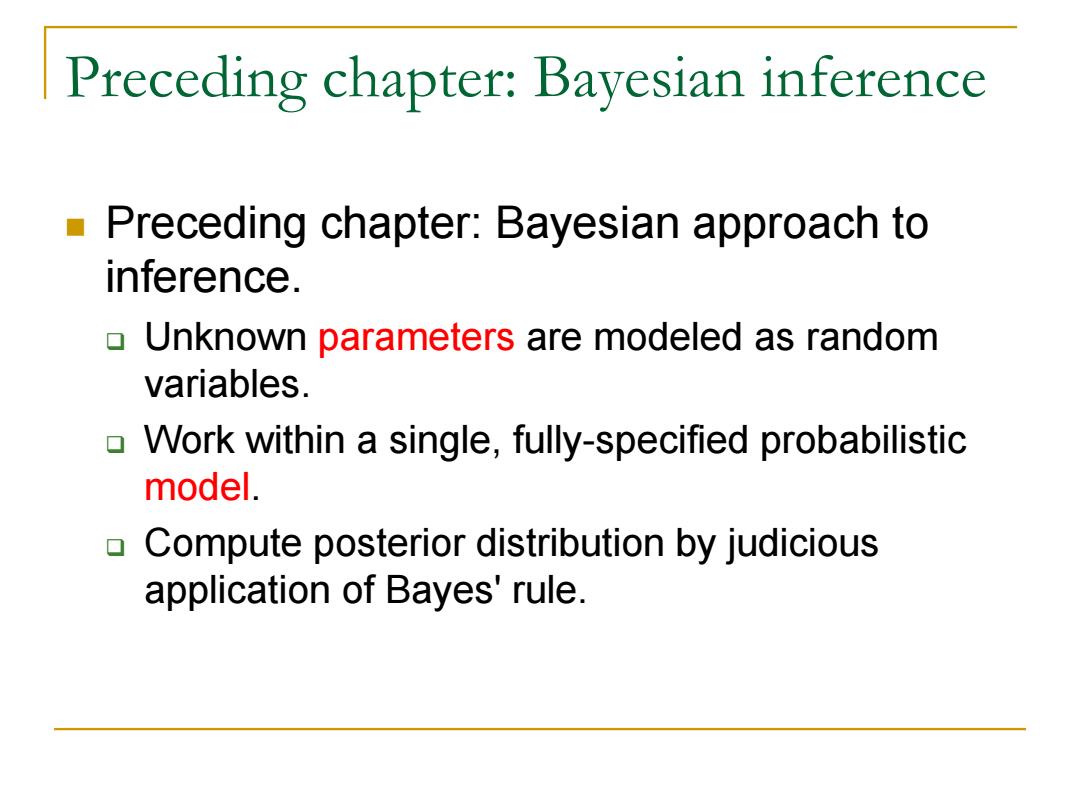
Preceding chapter:Bayesian inference Preceding chapter:Bayesian approach to inference. Unknown parameters are modeled as random variables. Work within a single,fully-specified probabilistic model. Compute posterior distribution by judicious application of Bayes'rule
Preceding chapter: Bayesian inference Preceding chapter: Bayesian approach to inference. Unknown parameters are modeled as random variables. Work within a single, fully-specified probabilistic model. Compute posterior distribution by judicious application of Bayes' rule
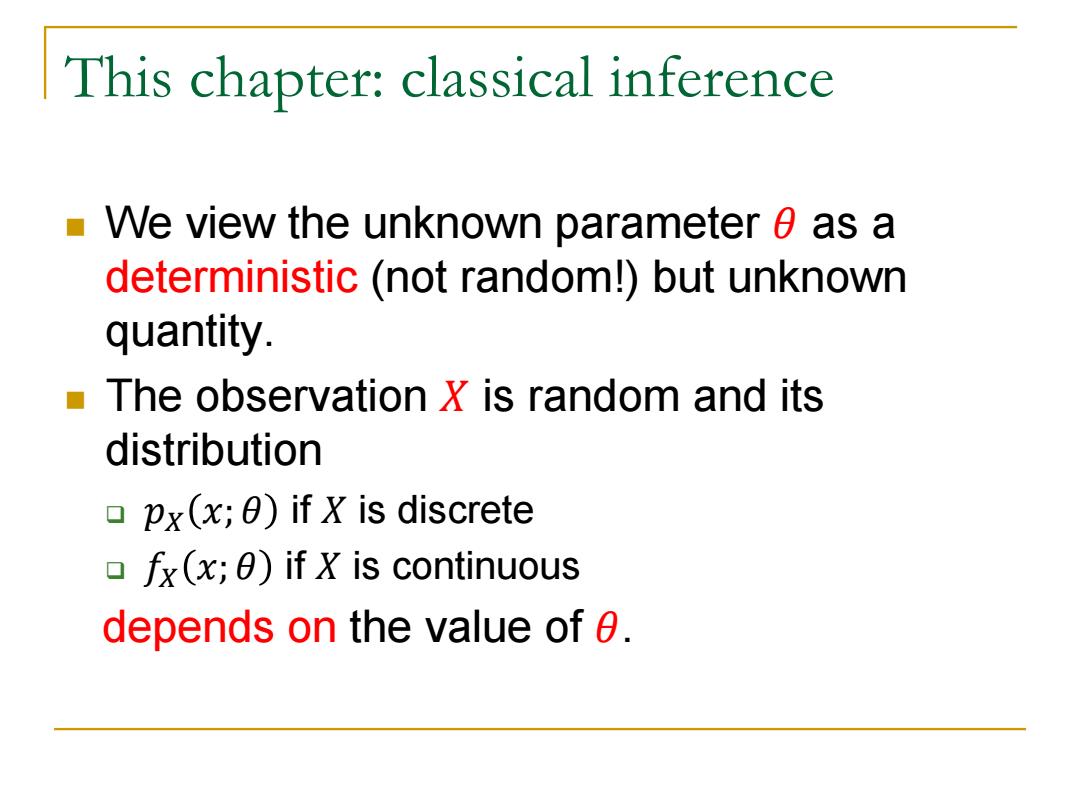
This chapter:classical inference We view the unknown parameter 0 as a deterministic (not random!)but unknown quantity. The observation X is random and its distribution px(x;0)if X is discrete fx(x;0)if X is continuous depends on the value of 0
This chapter: classical inference We view the unknown parameter 𝜃 as a deterministic (not random!) but unknown quantity. The observation 𝑋 is random and its distribution 𝑝𝑋 𝑥; 𝜃 if 𝑋 is discrete 𝑓𝑋 𝑥; 𝜃 if 𝑋 is continuous depends on the value of 𝜃
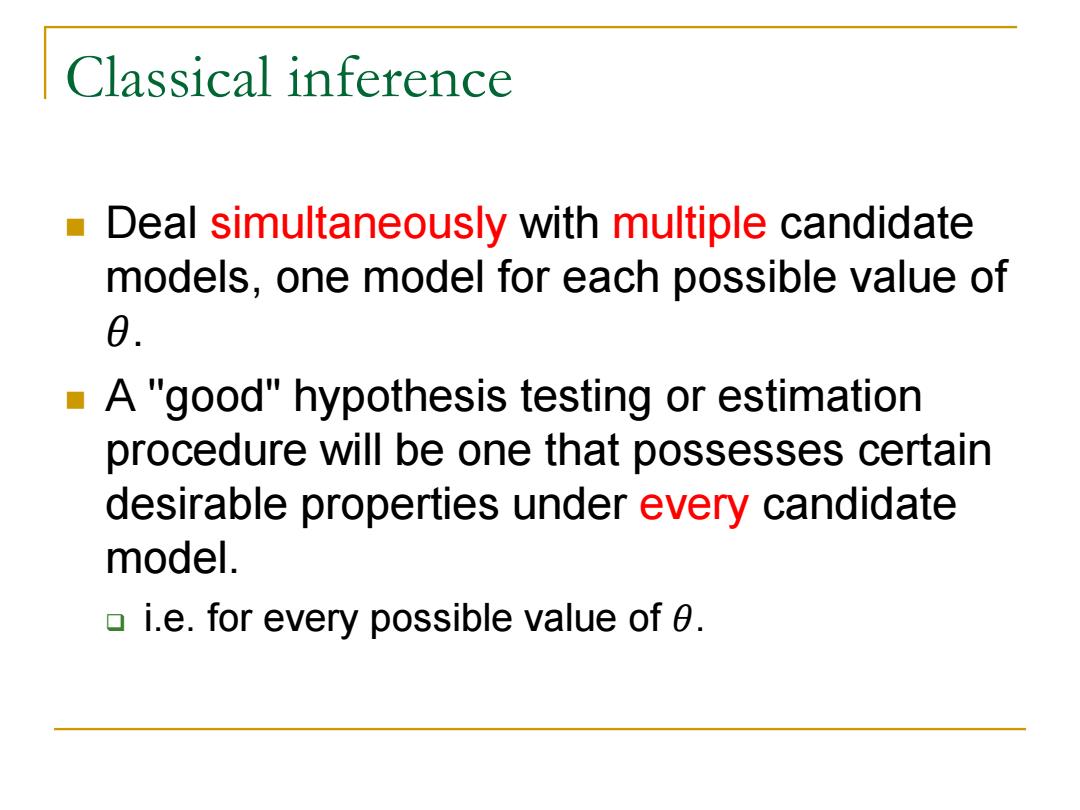
Classical inference Deal simultaneously with multiple candidate models,one model for each possible value of 0. A "good"hypothesis testing or estimation procedure will be one that possesses certain desirable properties under every candidate model. i.e.for every possible value of 0
Classical inference Deal simultaneously with multiple candidate models, one model for each possible value of 𝜃. A ''good" hypothesis testing or estimation procedure will be one that possesses certain desirable properties under every candidate model. i.e. for every possible value of 𝜃
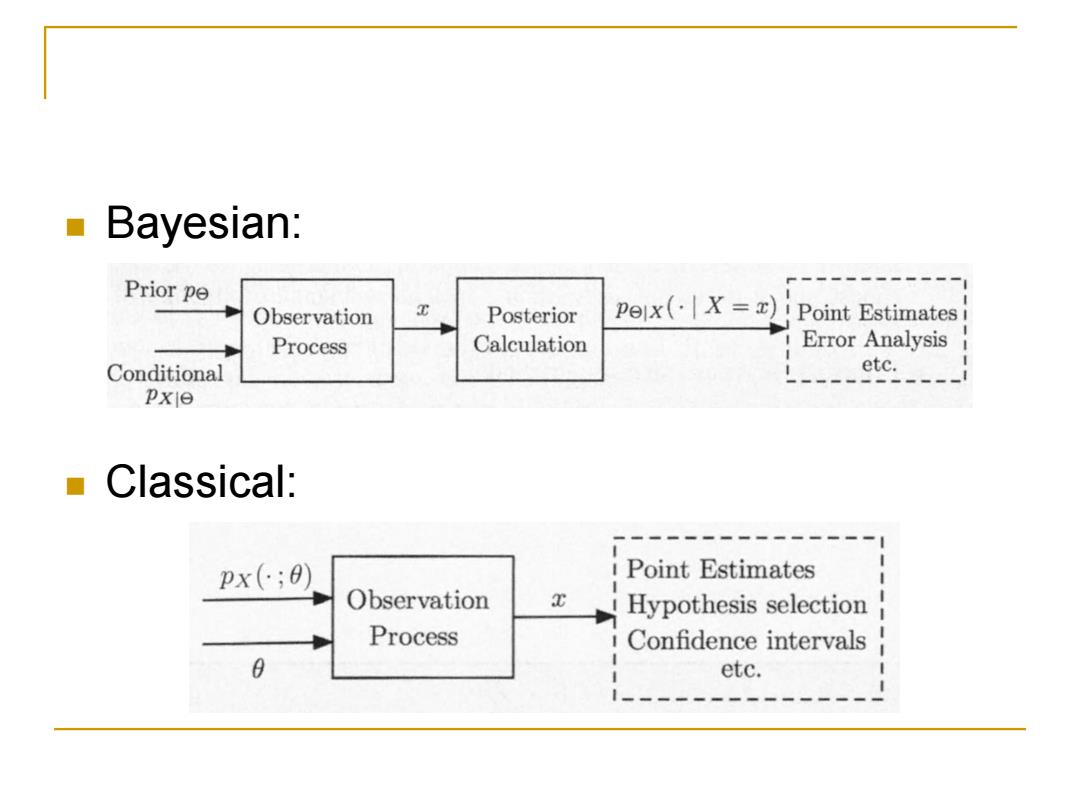
Bayesian: Prior pe Observation Posterior Pelx(X=)Point Estimatesi Process Calculation Error Analysis Conditional etc. Pxje Classical: px(;9) Point Estimates Observation x Hypothesis selection Process Confidence intervals 8 etc
Bayesian: Classical: